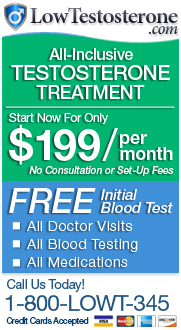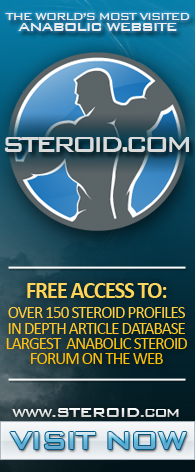Anastrozole Profile
Anastrozole is a powerful Aromatase Inhibitor (AI) that was developed in 1995 by Zenaca Pharmaceuticals under the brand name Arimidex for the purpose of fighting breast cancer. Since its inception, Anastrozole has been one of the leading anti-estrogenic medications on the market. The compound has proven far more effective in breast cancer treatment plans than Tamoxifen Citrate (Nolvadex), although both compounds are regularly used.
Anastrozole has also gained a lot of attention in recent years due to its use in testosterone replacement therapy (TRT) plans. Many TRT patients find the use of exogenous testosterone increases their estrogen levels, but by including Anastrozole in the program estrogen can be controlled. For any TRT plan to be successful, estrogen along with testosterone must be balanced and Anastrozole can help the patient reach this end.

Anastrozole Functions:
Anastrozole is a very simple AI and while simple it remains one of the most powerfully effective AI's on the market. When testosterone is present in the body, endogenous (made naturally) or exogenous (provided externally), the hormone has the ability to convert to estrogen. This testosterone to estrogen conversion is due to the testosterone hormone's interaction with the aromatase enzyme and what is commonly referred to as aromatization. Anastrozole will actively inhibit the aromatase enzyme, thereby preventing the testosterone to estrogen conversion and any related affects that could come with elevated estrogen levels. Elevated estrogen levels can lead to gynecomastia (male breast enlargement) and excess water retention most commonly, which can in turn promote high blood pressure if water retention becomes severe. The use of Anastrozole when needed will prevent such related actions baring any secondary or unrelated issues. The compound is so effective data has shown it has the ability to suppress estrogen by as much as 80%.
Anastrozole also carries traits outside estrogen suppression, primarily natural testosterone stimulation. This AI has the ability to stimulate the release of Luteinizing Hormone (LH) and Follicle Stimulating Hormone (FSH), two hormones that signal the testicles to produce more testosterone when released. However, for the TRT patient this is of very little concern or benefit as the exogenous testosterone he'll be using will provide all the testosterone he needs. Unfortunately, some physicians who are not well-versed in proper TRT protocols may prescribe patients this AI in hopes that it will correct their low level state without exogenous testosterone use. While it may bring levels up slightly it's rarely enough. Further, if the individual suffers from primary hypogonadism it will have little to no effect on his testosterone production as such an individual normally produces abundant amounts of LH already.
The Effects of Anastrozole:
Anastrozole carries benefits to both the breast cancer and TRT patient, and while the purpose of use differs the overall purpose is relatively the same, suppressing estrogen. Those who suffer from breast cancer necessarily must reduce estrogen levels as the cancer actively feeds and grows off of the estrogen hormone. By reducing circulating estrogen the individual can starve the cancer, and in some cases, eradicate it. For many years the Selective Estrogen Receptor Modulator (SERM) Nolvadex was primarily used for this purpose, but it is not as effective. Nolvadex, like all SERM's, cannot inhibit aromatization or lower estrogen levels. SERM's function by binding to the estrogen receptors, thereby preventing the hormone from binding and performing its action. For many cancer patients, Nolvadex is now used once the cancer is in remission but Anastrozole remains the most effective anti-estrogenic tool for fighting active breast cancer.
Then we have the TRT patient, and here Anastrozole proves beneficial again for the same reason it is for the breast cancer patient, reducing estrogen levels. This will prevent the aforementioned effects (gynecomastia, water retention) and ensure the benefits of TRT are met. When estrogen levels are too high despite increases in testosterone, this can actually reverse the enhancements in libido, energy and of the metabolism. Beyond standard TRT use, many anabolic steroid users, those supplementing with supraphysiological doses of testosterone will benefit from this AI's use. However, such steroid users will find the AI is relatively ineffective when using steroids that do not aromatize as there is no aromatase to inhibit.
An important note - Many anabolic steroid users supplement with Anastrozole during what is known as the Post Cycle Therapy (PCT) phase following a steroid cycle. The PCT phase is implemented in order to stimulate natural testosterone production that has been suppressed due to anabolic steroid use. While Anastrozole can stimulate natural testosterone production, it is not a suitable medication for PCT. Stimulating natural testosterone production is the primary purpose of PCT but beyond stimulation is promoting normalization, which cannot be accomplished by dramatically suppressing estrogen levels, which will occur with the amount of Anastrozole needed to fully stimulate testosterone production. For the purpose of PCT, SERM's like Nolvadex and Clomid (Clomiphene Citrate) should be the first choice.
Side Effects of Anastrozole:
There are possible side effects of Anastrozole, but overall it is a very well-tolerated AI. Those who suffer from the side effects of Anastrozole will most commonly do so due to a poor response to the medication. This is a rule that applies to most all medications, over the counter or prescription based. For example, most can take Tylenol, but there are those who experience negative effects due to a poor response to the medicine. The same can be said of Anastrozole.
The most common side effect of Anastrozole is weakness or fatigue as lowered estrogen levels can be draining. However, for the TRT patient or anabolic steroid user this is rarely an issue as long as responsible Anastrozole doses are followed. The exception would be in cases of over use. It may, however, be an issue for the breast cancer patient, but in the name of fighting the cancer it's something that simply must be tolerated. Other possible side effects of Anastrozole listed by the manufacturers include:
- Depression (very rare)
- Headaches
- High Blood Pressure (rare)
- Hot Flashes
- Joint Pain (rare for TRT patients)
- Nausea (rare)
- Vomiting (very rare)
Another possible side effect of Anastrozole is the compound has been shown to have the ability to reduce bone mineral content. This could potentially make some individuals more susceptible to osteoporosis, particularly women, but it should not be an issue for TRT patients or anabolic steroid users. The use of exogenous steroidal hormones has been shown t increase bone mineral content, which would in affect nullify this possible reduction caused by Anastrozole.
The final area of possible concern is perhaps the most controversial when it comes to the side effects of Anastrozole and it surrounds cholesterol. Studies have shown the use of this AI will have little to no affect on cholesterol when used without a steroidal hormone; however, the use of an aromatizing hormone like testosterone can change this. The use of testosterone can also have a negative impact on cholesterol, although normally not of any concern. Data has shown TRT doses of testosterone to have little to no affect, but supraphysiological doses may suppress HDL cholesterol by as much as 25%, although controllable through diet in most cases. Then we have added Anastrozole and studies have shown HDL cholesterol may be suppressed by as much as 20+% with therapeutic or supraphysicological doses. Again, the individual's diet will play a massive role. Ensuring your diet is rich in omega fatty acids and low in simple sugars and saturated fats is enough to protect most men. Regular cardiovascular activity is also a good idea and there are quality cholesterol antioxidant formulas available. For the anabolic steroid user he will won't to keep these things in mind. For the TRT patient, he will not require a large Anastrozole dose and by maintaining a responsible therapeutic plan he should not have any related cholesterol issues.
Anastrozole Doses:
For the breast cancer patient, standard Anastrozole doses will normally be 1mg every day until the cancer subsides. This is a very large dose but necessary in such therapeutic plans. For the TRT patient, standard Anastrozole doses will normally fall in the 0.5mg two times per week range. This is normally enough to control estrogen when supplementing with therapeutic testosterone doses. Steroid users supplementing with supraphysiological doses of testosterone often need 0.25-0.5mg every other day in order to combat the large amounts of aromatase activity.
Buy Anastrozole:
You can easily buy Anastrozole on the pharmaceutical and black markets as well as the research market. Although it is not a controlled substance, in the U.S. you will need a prescription. Those who purchase black market Anastrozole will be breaking the law. Then there's the gray area of the law that surrounds Research Chemical Labs (RCL's). RCL's are legally allowed to sell numerous non-controlled substances so as long as they are sold and purchased for research purposes only. No prescription is needed to make a purchase from an RCL. The compounds from RCL's will normally be found in an oral liquid state rather than oral tablet form. However, if you buy Anastrozole from an RCL keep in mind the burden of proof as it pertains to research is on you and could become an issue if law enforcement decided to make it one.


